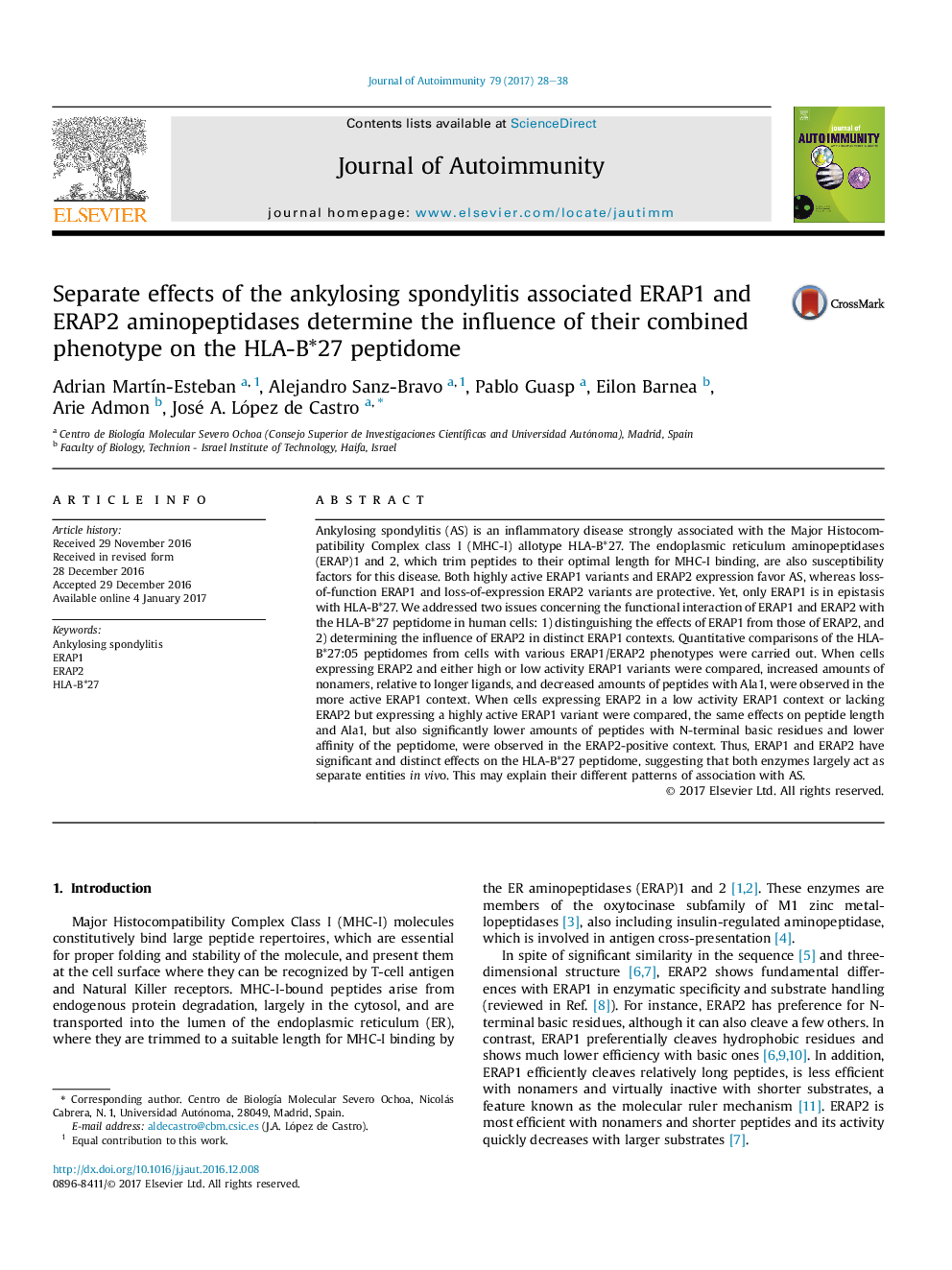| Article ID | Journal | Published Year | Pages | File Type |
|---|---|---|---|---|
| 5667881 | Journal of Autoimmunity | 2017 | 11 Pages |
â¢The influence of ERAP1 and ERAP2 on the HLA-B*27 peptidome is analyzed.â¢ERAP1 and ERAP2 have distinct effects on HLA-B*27.â¢The effects of ERAP2 are similar in different ERAP1 contexts.â¢Both enzymes cooperate but act largely as separate entities in vivo.â¢The HLA-B*27 peptidome plays a major pathogenetic role in ankylosing spondylitis.
Ankylosing spondylitis (AS) is an inflammatory disease strongly associated with the Major Histocompatibility Complex class I (MHC-I) allotype HLA-B*27. The endoplasmic reticulum aminopeptidases (ERAP)1 and 2, which trim peptides to their optimal length for MHC-I binding, are also susceptibility factors for this disease. Both highly active ERAP1 variants and ERAP2 expression favor AS, whereas loss-of-function ERAP1 and loss-of-expression ERAP2 variants are protective. Yet, only ERAP1 is in epistasis with HLA-B*27. We addressed two issues concerning the functional interaction of ERAP1 and ERAP2 with the HLA-B*27 peptidome in human cells: 1) distinguishing the effects of ERAP1 from those of ERAP2, and 2) determining the influence of ERAP2 in distinct ERAP1 contexts. Quantitative comparisons of the HLA-B*27:05 peptidomes from cells with various ERAP1/ERAP2 phenotypes were carried out. When cells expressing ERAP2 and either high or low activity ERAP1 variants were compared, increased amounts of nonamers, relative to longer ligands, and decreased amounts of peptides with Ala1, were observed in the more active ERAP1 context. When cells expressing ERAP2 in a low activity ERAP1 context or lacking ERAP2 but expressing a highly active ERAP1 variant were compared, the same effects on peptide length and Ala1, but also significantly lower amounts of peptides with N-terminal basic residues and lower affinity of the peptidome, were observed in the ERAP2-positive context. Thus, ERAP1 and ERAP2 have significant and distinct effects on the HLA-B*27 peptidome, suggesting that both enzymes largely act as separate entities in vivo. This may explain their different patterns of association with AS.
